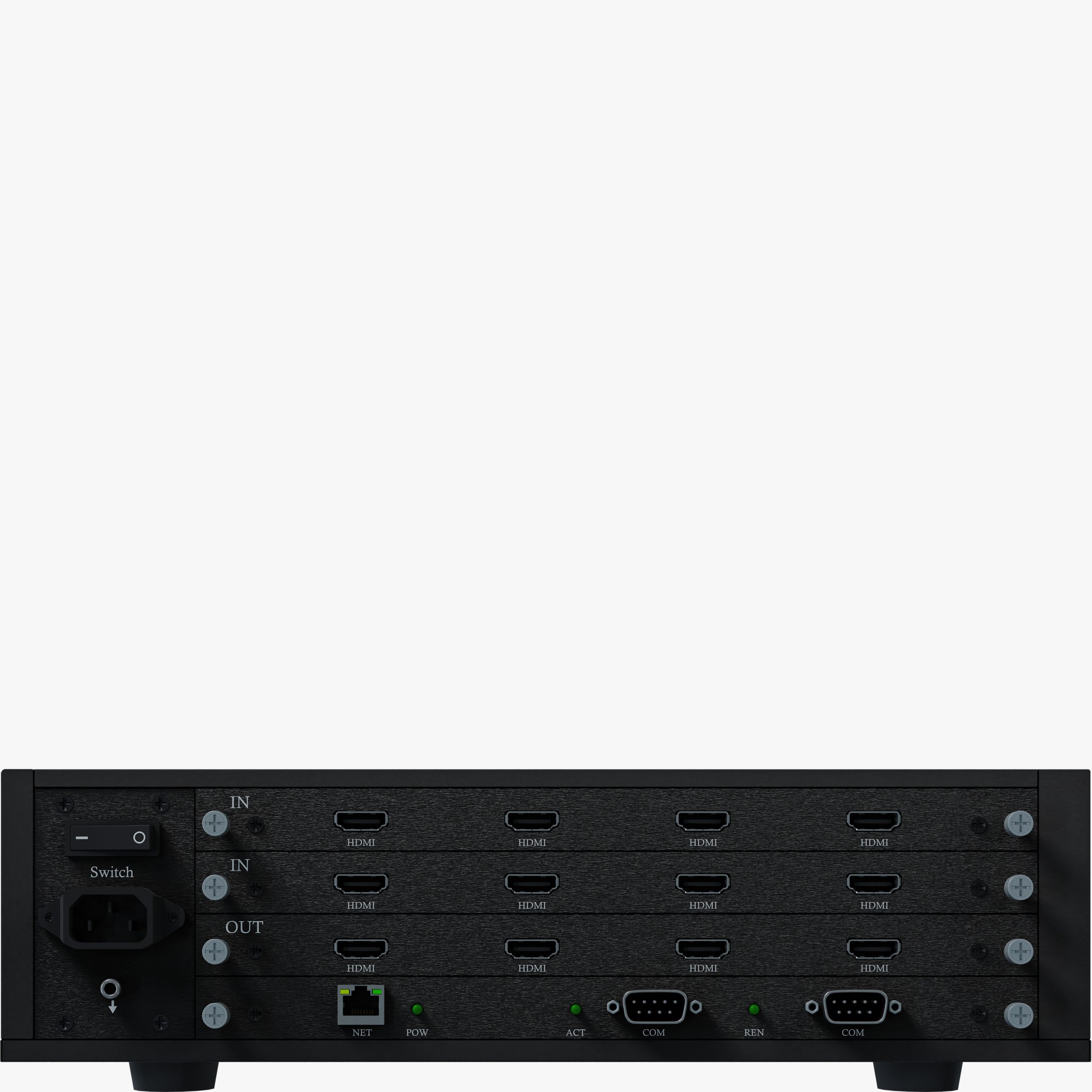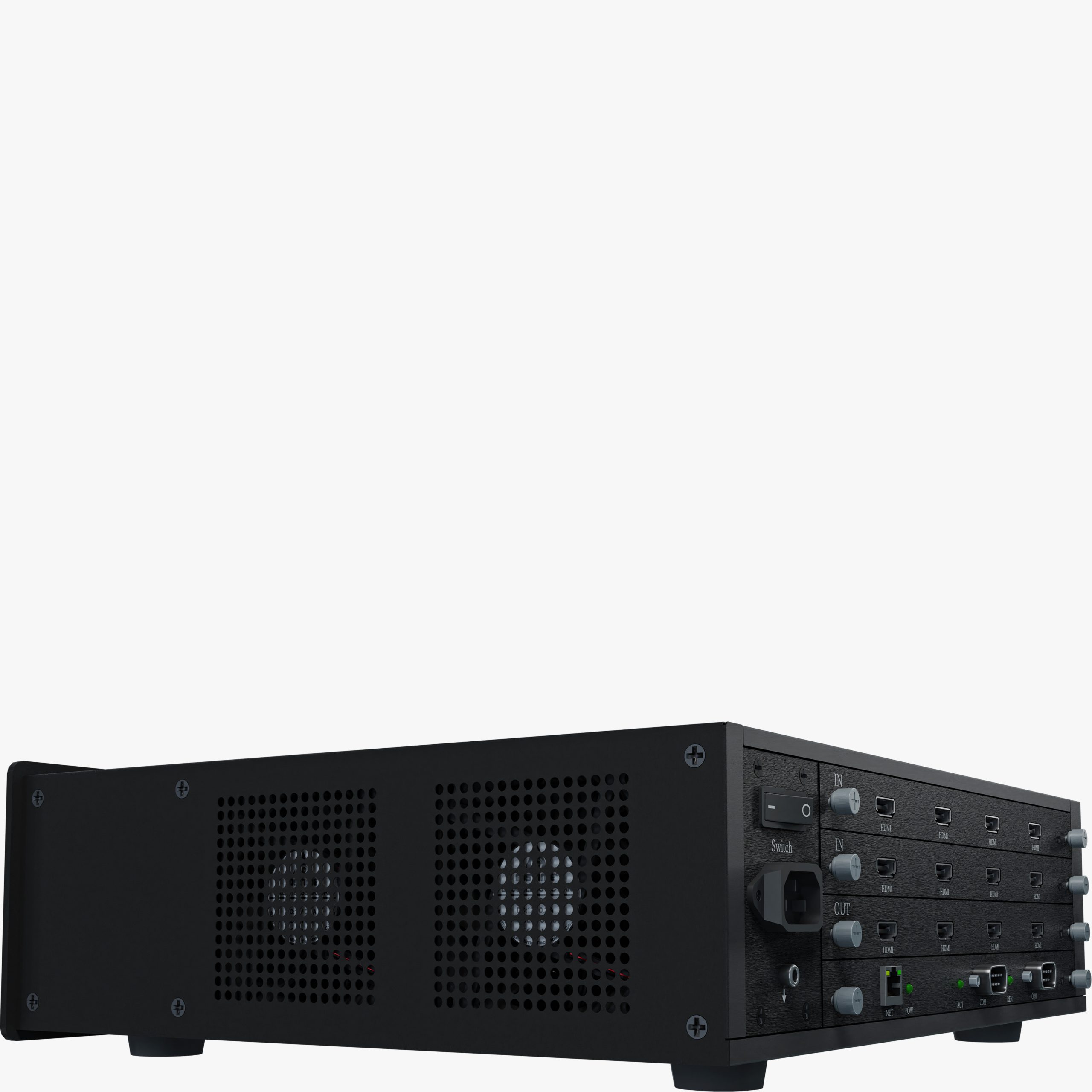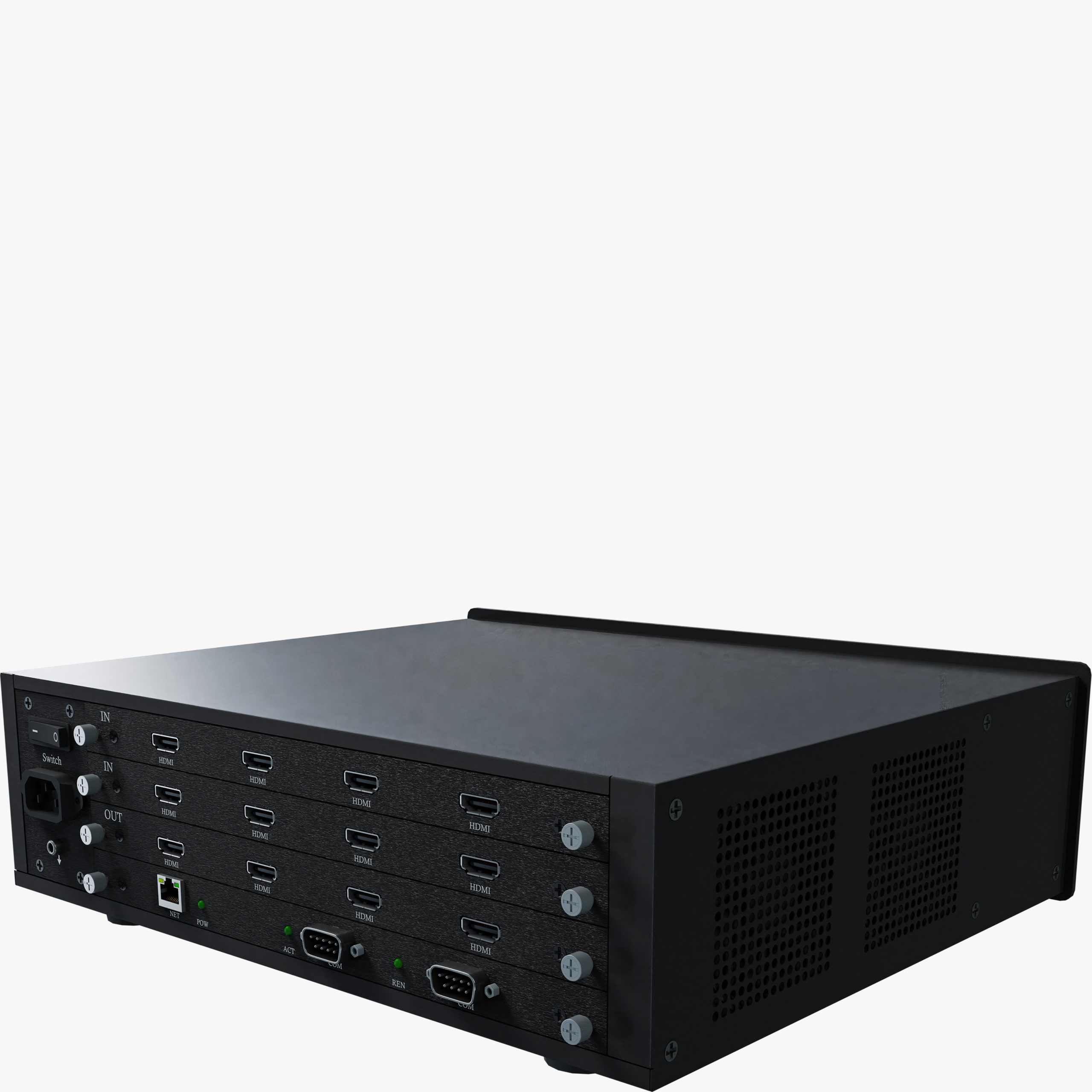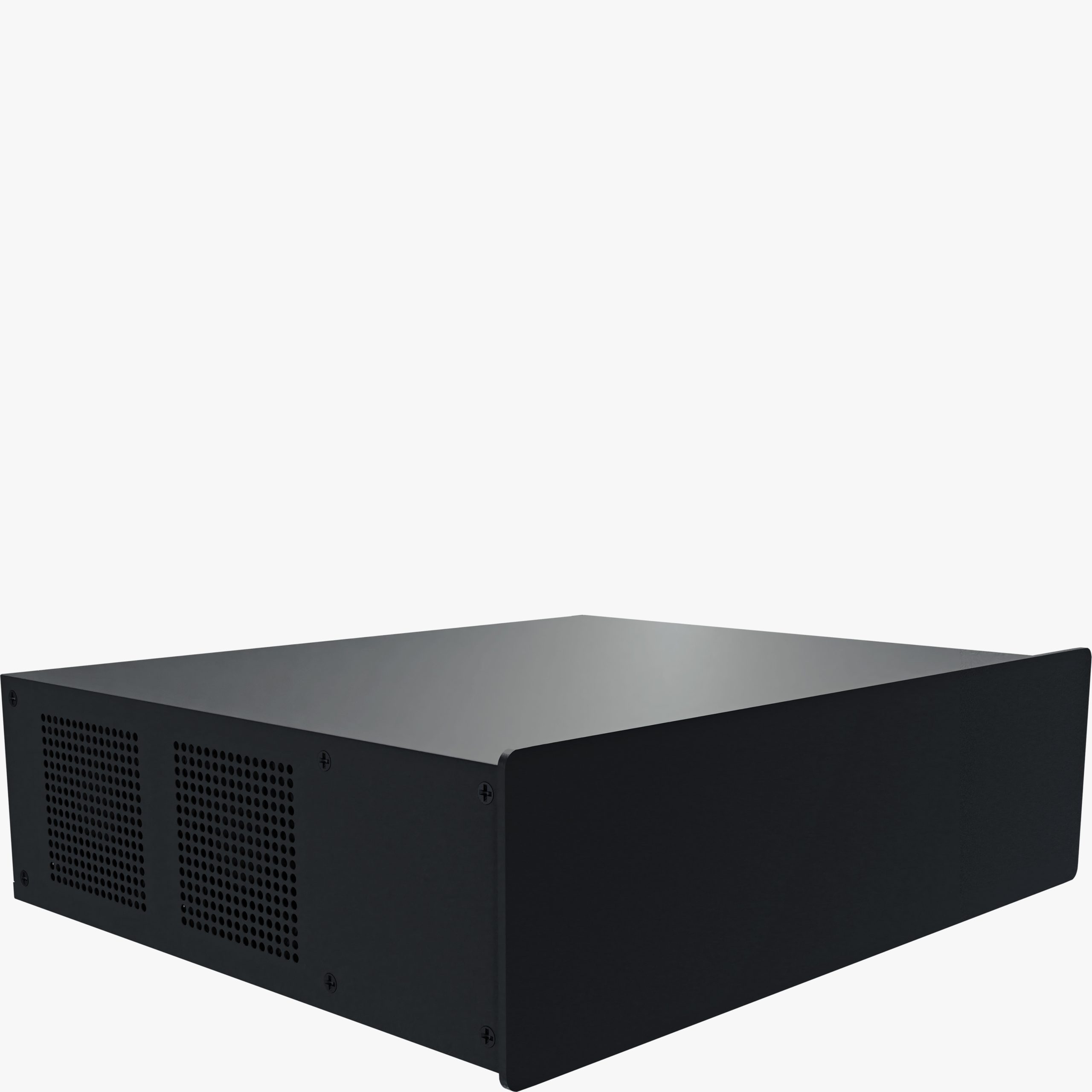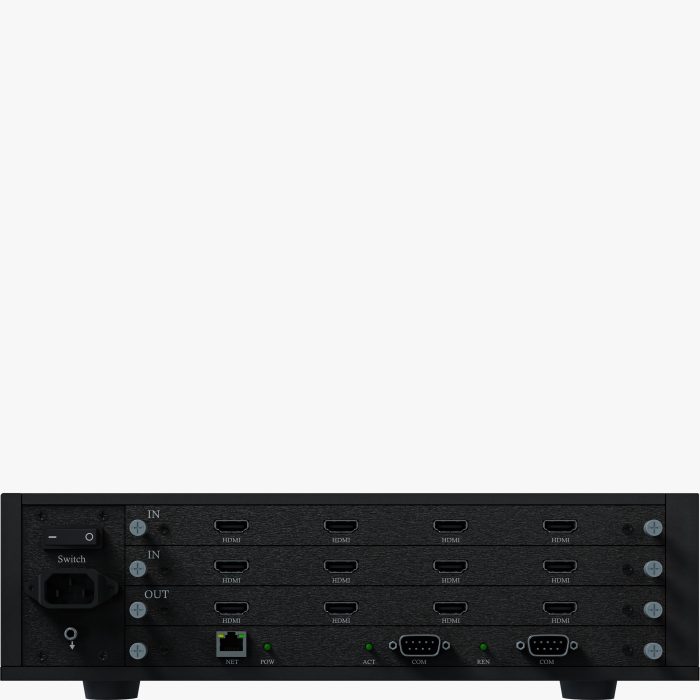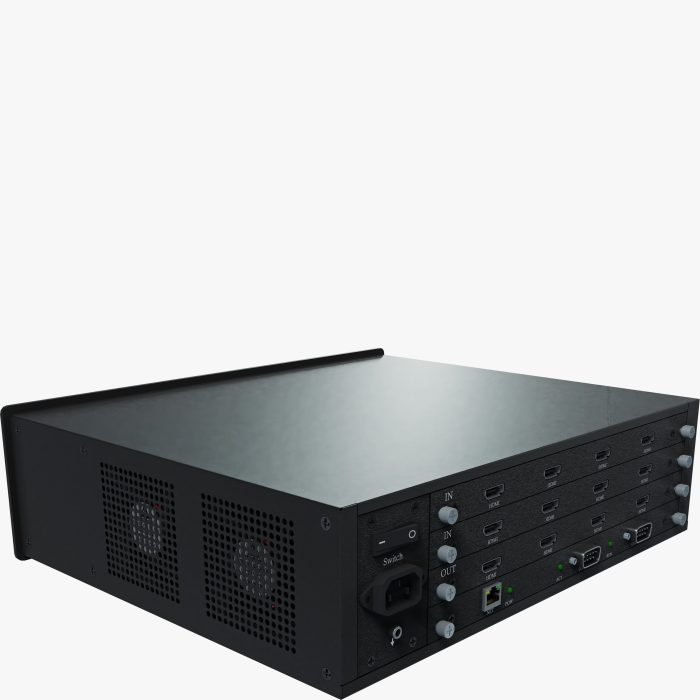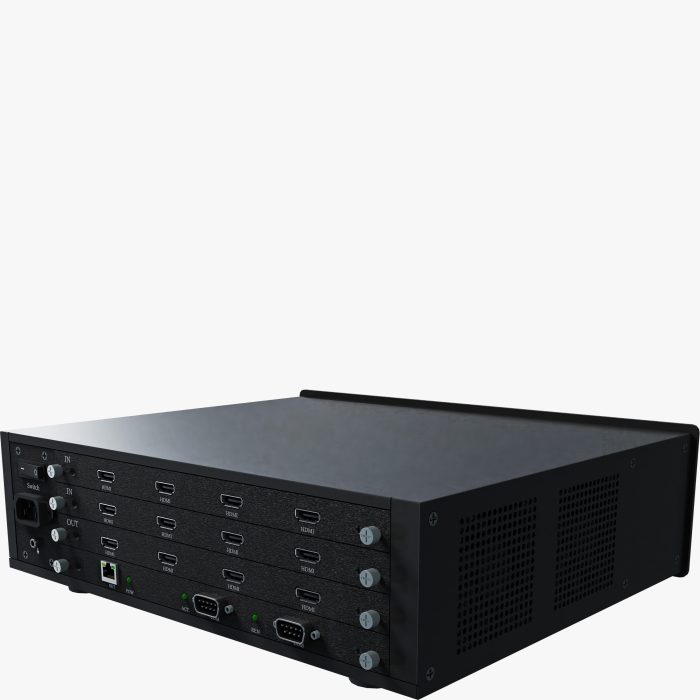- System structure: Pure hardware FPGA architecture
- Start-up: <15s
- Signal type: HDMI 1.3
- Channel: 4 in 4 out, 4 in 8 out, 8 in 4 out
- Display mode: Roaming, overlay, zoom in/out, multi-windowing, scene switch, PIP, full screen and combination screen
- Input resolution: 1080p
- Number of signal copies: Up to 8
- Single-screen window: 4 windows on each of two screens
- Control structure: Software / Hardware
- Control method: RS232/Network/Keypad and compatible with third-party control system
- Safety: Hardware structure, no virus interference
- MTBF: 50000h
- Continuity: 365 days, 7×24 hours operation
- Operating temperature: (-15) – 60
- Storage temperature: (-30) – 75
- Operating humidity: 10 to 90% without condensation
- Storage humidity: 5~95% without condensation
Video Wall Controller S20
ADTESU S20 video wall controller is a new generation professional image processing product that is based on the development of multi-windows, ultra-high definition, and visual display control technology. Compared to other matrix switchers in the market, the S20 has upgraded its system capacity and uses a 6.25G base exchange processing chip, so there is a significant advantage in the processing speed and professional display control. Meanwhile, the ADTESU S20 video wall controller supports multiple services and long-term reliability. It is an all-in-one product that has monitoring control, scene preset, Log management, user management, and other advanced applications to meet a variety of professional system application requirements.
Features:
- Pure-hardware FPGA Array, modular design, 6.25G/s base exchange processing speed.
- Support HDMI sources self-adaption on a single input card.
- Support HDCP 2.0 for HDMI input and output.
- Support opening 4 windows on a single display.
- Support scene management, up to 64 scenes.
- Integrated with hybrid matrix function, output windows switching, friendly to the system integrator.
- Support RS232, Network control, and compatible with third-party control systems.
- Support roaming, PIP, overlay, zoom in/out, multi-window switching, signal clip, and a variety of display modes such as split screen, full screen, and combination screen.
- Mobile visual management applications, support iPad, and Surface.
- Support EDID, and customize the output resolution according to the physical resolution of the display system.


